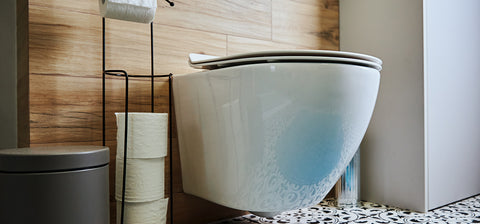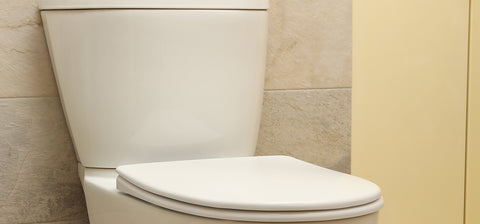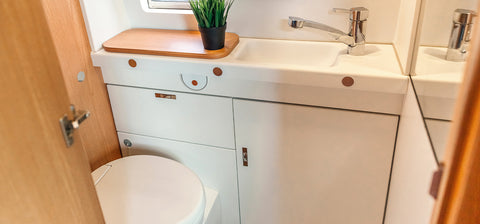What are Different Types Of Toilets? Explore Your Options Today!
Table of Contents:
-
The significance of choosing the right toilet
-
Overview of what are different types of toilets
-
What to consider when selecting a toilet
-
Types of Toilets
-
Wall-hung Toilets
-
Back-to-wall Toilets
-
Close-Coupled Toilets
-
Traditional Toilets
-
Toilet and basin combination units
-
FAQs
-
Conclusion
The Significance of Choosing the Right Toilet
When it comes to bathroom fixtures, the toilet is arguably the most essential. It's a fixture we use multiple times a day, and its design and functionality can greatly impact our daily lives.
With a wide array of toilet types available, selecting the right one for your bathroom is crucial.
In this comprehensive guide, we will explore What are different types of toilets, their features, and the factors to consider when making your choice.
Overview of What are Different Types Of Toilets ?
Toilets come in various styles and designs, each catering to different bathroom layouts and preferences.
Whether you're looking for a space-saving solution for a small bathroom or a classic design for a traditional setting, there's a toilet type to match your needs.
This article will provide insights into wall-hung toilets, back-to-wall toilets, close-coupled toilets, traditional toilets, and toilet and basin combination units.
What to Consider When Selecting a Toilet
Choosing the right toilet involves considering several factors.
These include the available space in your bathroom, the design aesthetic you desire, and the features that enhance comfort and functionality.
By understanding the benefits and features of each toilet type, you can make an informed decision that suits your specific requirements.
Types of Toilets
1.Wall-Hung Toilets
Key Features and Benefits
Wall-hung toilets are known for their modern and minimalist appearance. They are attached to the wall, leaving the floor area beneath them open.
This design not only creates a sleek look but also makes cleaning the bathroom floor easier.
Additionally, wall-hung toilets often feature concealed cisterns, further contributing to their aesthetic appeal.
Ideal Applications and Space-Saving Advantages
Wall-hung toilets are excellent choices for small bathrooms where space is limited.
Their floating design creates an illusion of more space, making them perfect for compact bathroom layouts.
Moreover, their elevated position allows for easy cleaning and maintenance underneath.
Toilet Seat Shapes and Design Options
Wall-hung toilets are available with various toilet seat shapes, including standard, elongated, and square.
The choice of seat shape can impact the overall look and comfort of the toilet. When selecting a wall-hung toilet, consider the design elements that best match your bathroom's style.
2.Back-to-Wall Toilets
Exploring the Concealed Cistern
Back-to-wall toilets share similarities with wall-hung toilets in that they often feature concealed cisterns.
This design choice helps maintain a clean and uncluttered appearance in the bathroom. The cistern is typically hidden within the wall or behind a cabinet, giving the toilet a seamless look.
Flush Options: Handle, Push Button, and Sensor Flush Kit
Back-to-wall toilets offer a variety of flush options, including traditional flush handles, modern push buttons, and sensor flush kits.
The choice of flush mechanism can add convenience and functionality to your bathroom. Sensor flush kits, for example, provide a touchless and hygienic flushing experience.
The Appeal of the Back-to-Wall Toilet Design
Back-to-wall toilets are favored for their contemporary and unobtrusive design.
They are suitable for bathrooms where you want to maintain a clean and clutter-free appearance while benefiting from the functionality of a traditional toilet.
Their flush options and concealed cisterns contribute to a modern and efficient bathroom.
3.Close-Coupled Toilets
Understanding the Components and Cistern Placement
Close-coupled toilets consist of two main components: the bowl and the cistern.
Unlike wall-hung or back-to-wall toilets, these components are connected and form a single unit.
The cistern is placed directly on top of the bowl, with a visible connection between the two.
Lever Flush vs. Push Button Flush
Close-coupled toilets typically offer both lever flush and push button flush options.
Lever flushes are familiar and provide a traditional appearance, while push button flushes offer modernity and simplicity.
The choice between the two depends on your preference and the bathroom's style.
Choosing a Close-Coupled Toilet for Your Bathroom
Close-coupled toilets are versatile and can complement a range of bathroom designs.
They are suitable for bathrooms of various sizes and styles, making them a popular choice for many homeowners.
Their straightforward installation and reliable performance make them a practical option for any bathroom.
4.Traditional Toilets
The Enduring Charm of Classic Toilet Styles
Traditional toilets are beloved for their timeless and elegant designs.
They often feature decorative details, such as molding and trim, that evoke a sense of nostalgia and sophistication.
These toilets are perfect for bathrooms with a classic or vintage aesthetic.
Toilet Seat Options and Design Variations
Traditional toilets offer a wide range of toilet seat options, including wooden seats with intricate patterns and designs.
The choice of toilet seat can enhance the overall look and feel of your bathroom. Consider selecting a seat that complements the traditional design elements in your bathroom.
When and Where Traditional Toilets Shine
Traditional toilets are well-suited for bathrooms that embrace a classic or period-style theme.
They are also a great choice for homes with historic or heritage features, as they seamlessly blend with the existing decor.
If you appreciate timeless elegance and design, a traditional toilet may be the ideal fit for your bathroom.
5.Toilet and Basin Combination Units
The Space-Saving Magic of Combination Units
Toilet and basin combination units are the epitome of space-saving solutions.
These units integrate a toilet with a compact basin or sink, making them perfect for small bathrooms or cloakrooms.
They maximize functionality while minimizing the use of precious floor space.
The Integration of Toilet and Basin
Combination units cleverly combine the toilet and basin into a single piece of furniture.
This not only saves space but also creates a cohesive and visually appealing bathroom design.
The basin is usually positioned above the toilet cistern, allowing for efficient water usage.
Small Bathroom Solutions
For small bathrooms, toilet and basin combination units are a game-changer.
They offer a convenient way to add a sink to a tight space, eliminating the need for a separate vanity or basin.
This design innovation is both practical and aesthetically pleasing, making it an excellent choice for compact bathroom layouts.
FAQ Section
1.What are the three main types of toilet?
The three main types of toilets are:
- Close-Coupled Toilet: This type features the cistern directly above the toilet bowl and is easily identifiable by its traditional design.
- Back-to-Wall Toilet: Back-to-wall toilets have a concealed cistern hidden behind a panel or wall, offering a modern and space-saving design.
- Wall-Hung Toilet: Wall-hung toilets are suspended from the wall and have a concealed cistern, creating a sleek and contemporary appearance.
2.What is the difference between the different types of toilets?
The main differences between these toilet types are in their design and installation:
- Close-Coupled Toilet: Traditional in design, the cistern is directly attached to the toilet bowl.
- Back-to-Wall Toilet: This type conceals the cistern and waste pipes behind a panel or wall, providing a clean and minimalist look.
- Wall-Hung Toilet: Wall-hung toilets are suspended from the wall, with the cistern hidden, offering a modern and space-efficient appearance.
3.How do I know what type of toilet I have?
To identify the type of toilet you have, examine its design and installation. A close-coupled toilet will have the cistern directly attached to the toilet bowl, while back-to-wall and wall-hung toilets will have concealed cisterns and different installation methods.
4.What are the top 5 toilets?
- Determining the top toilets can depend on various factors such as features, design, and user preferences. When selecting a toilet, consider your specific needs, including style, functionality, and budget.
- Certainly, here are five common types of toilets:
- Close-Coupled Toilet: The cistern is directly attached to the toilet bowl. It's a traditional design.
- Low-Level Toilet: The cistern is on the wall above the toilet. Vintage look, flush with a lever or button.
- Back to Wall Toilet: Cistern and pipes are hidden behind a wall or panel. Various flush options.
- Wall-Hung Toilet: Cistern is hidden in a wall, and the toilet is suspended from it. Modern and sleek.
- Corner Toilet: Fits neatly in bathroom corners, saving space. Comes in different styles.
Look at our toilets collection here
Conclusion
In conclusion, the different types of toilet you choose for your bathroom is a significant decision that impacts both form and function.
Whether you prefer the modern look of a wall-hung toilet, the sleek design of a back-to-wall toilet, the practicality of a close-coupled toilet, the timeless elegance of a traditional toilet, or the space-saving efficiency of a combination unit, there's a toilet type that suits your needs.
Consider the size and style of your bathroom, as well as your personal preferences, when selecting the perfect throne for your space. By making an informed decision, you can enjoy a bathroom that combines comfort, aesthetics, and functionality seamlessly.






































